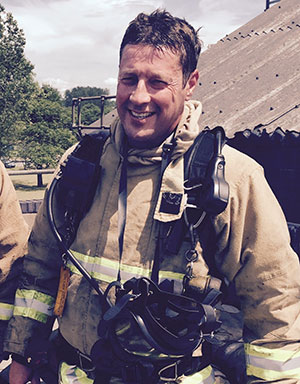Meaning of “responsible person”
3. In this Order “responsible person” means—
(a) in relation to a workplace, the employer, if the workplace is to any extent under his control;
(b) in relation to any premises not falling within paragraph (a)—
(i) the person who has control of the premises (as occupier or otherwise) in connection with the carrying on by him of a trade, business or other undertaking (for profit or not); or
(ii) the owner, where the person in control of the premises does not have control in connection with the carrying on by that person of a trade, business or other undertaking.
What the Enforcement Guidance says:
Article 3 defines who is the responsible person for the premises. In order to meet the
obligations under EC Directives, wherever there is an employer they will continue to be
responsible for the safety of their employees. In order to achieve the necessary broader
coverage of the legislation beyond workplaces, the definition has been extended.
Therefore, where there is no employer in any premises, the occupier or owner of the
premises is the responsible person.
The responsible person will be responsible not only for the safety of employees, but for
that of any person (a “relevant person”, as defined in article 2) lawfully on the premises,
or in the immediate vicinity of the premises and at risk from a fire on the premises.
Article 3(a) provides that in a workplace the employer is the responsible person if
the workplace is under the employer’s control. This reflects the Framework Directive
(89/391/EEC), which imposes unconditional obligations on employers by having the
ultimate responsibility for the safety of their employees in case of fire, even where
others have obligations in respect of the premises.
If the premises are not a workplace, or are a workplace but are not under the
employer’s control, the responsible person is determined by whether the person who
has control over the premises does so in connection with the carrying on of a trade,
business or undertaking (whether or not for profit).
If so, article 3(b)(i) provides that the person with control is the responsible person.
If not, article 3(b)(ii) provides that the owner is the responsible person. Article 5(3)
extends the responsible person’s duties to include any other person to the extent
that they have control of the premises. Under Article 5(4) any person who by virtue
of any contract or tenancy has obligations of any extent in respect of maintenance of
the premises (and anything in them) or the safety of the premises is to be treated to
that extent as a person who has control for the purposes of Article 5(3). Enforcing
authorities should note that due to the reference to the term “any contract” is not
intended to be limited to those in respect of the occupation of property, eg a lease or
licence to occupy, but would include, for example, a contract for the installation and/or
maintenance of a fire alarm system or a fire sprinkler system.
In many cases there will be more than one person subject to the obligations of a
responsible person for premises. The level of responsibility will vary according to the
employment position (total responsibility for an employer) and the degree to which the
person can exercise control over safety in the premises. This is a deliberate aspect of
the Order to allow enforcement action to be taken against the person who is culpable
and/or in a position to remedy contraventions.
In cases where there is more than one responsible person or more than one person
with duties under the Order, it is expected that the enforcing authority will use its
discretion in deciding what enforcement action to take and against whom that action
should be taken. Enforcement action may be taken against one or more responsible
persons. For example, if an employer has no control over the area or matter in question
and a fire precaution is not being properly maintained by a landlord it may be more
appropriate to address enforcement measures to the landlord who does have control.
However, action may be appropriate against more than one person.
Enforcing authorities will wish to consider the degree of culpability and the
appropriateness as to the person (or persons) against whom any necessary action
should be taken. For example, where an owner’s acts or omissions jeopardise the
safety of employees, such as an obstruction to the means of escape, the employer, as
a responsible person, must call upon the owner, who has similar obligations to co-
operate and co-ordinate to do what is necessary in line with their responsibilities as
responsible persons. Even so, despite the absolute duty of the employer, where that
employer has acted reasonably and can demonstrate that fact and where the fault lies
with the owner it would be reasonable to consider taking action against the owner
alone.


